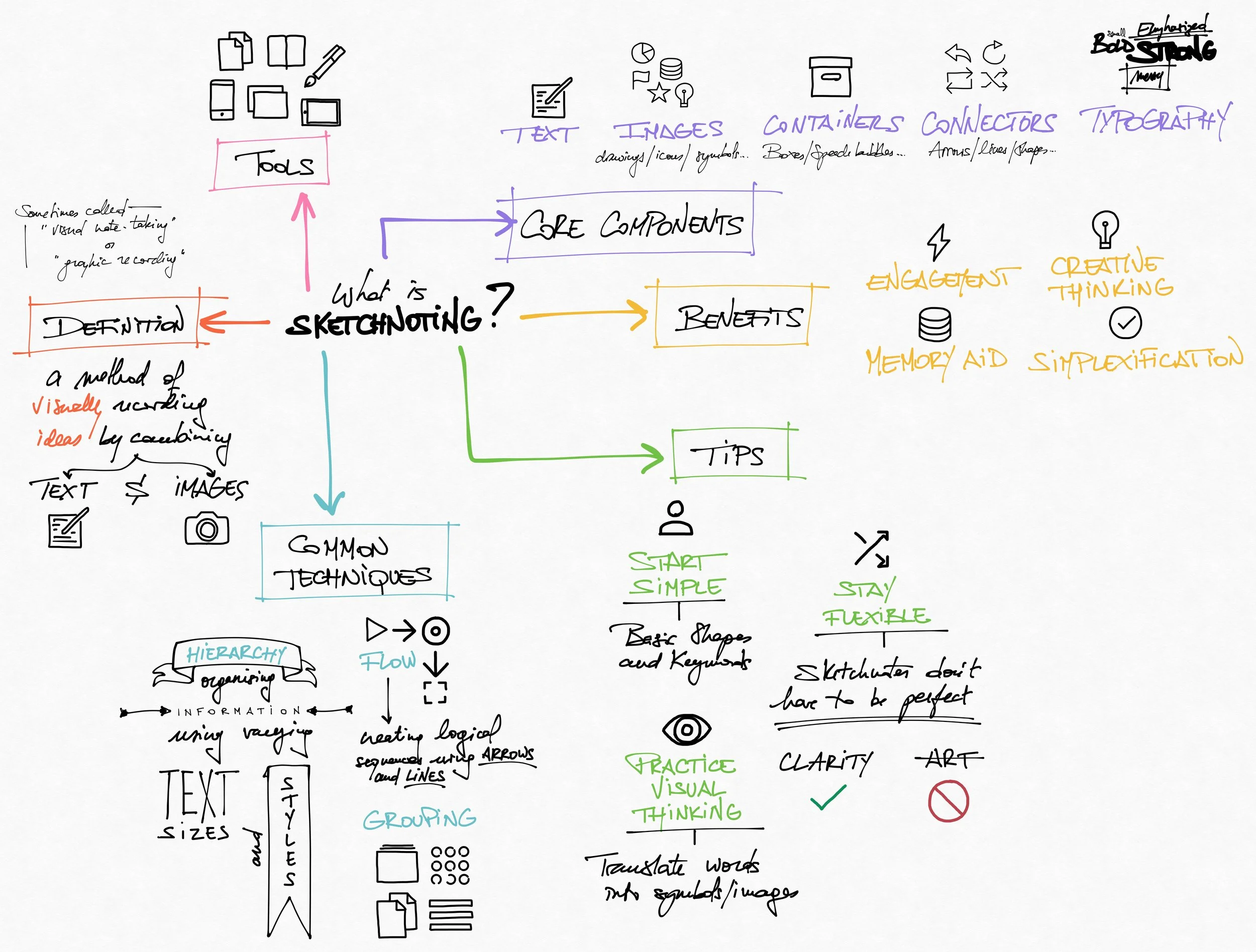What is Sketchnoting?
Sketchnoting, also called visual notetaking, is a powerful, creative and graphic note-taking technique through which individuals record their thoughts using illustrations, symbols, structures, and texts. The technique combines graphics with the traditional method of using text. The result is information that is captured and communicated visually and artistically. It’s a dynamic and engaging way to document ideas. But more than that, whether in a meeting, attending a lecture, or brainstorming new concepts, sketchnoting can transform how you process and recall information. I mainly use sketchnoting during lectures and conferences, but I also use a pen and sketchbook during work meetings or any event. You can sketchnote about anything, anywhere, anytime. All you need is a pen and paper or a tablet (which offers a more flexible approach to layout design). Sketchnotes can be as straightforward or detailed as you like, but the key is to capture the essence of the information in a format that resonates with you. It’s not about being an artist but visually representing information to enhance understanding and retention.
The Benefits of Sketchnoting
Enhanced memory retention: Studies have shown that combining visual elements with text can improve memory retention. Sketchnoting engages both sides of the brain—analytical and creative—helping you to remember concepts more effectively.
Better focus and engagement: Ir’s called deep learning. Traditional note-taking can sometimes lead to mindless transcribing. Sketchnoting, however, requires active listening and synthesis of information, keeping you more engaged in the material.
Creative expression: Sketchnoting allows you to express your creativity while learning. Whether you’re a doodler or someone who loves experimenting with different layouts and styles, sketchnoting gives you the freedom to make your notes your own.
Simplified complex ideas: You’ve probably already heard this famous quote from Albert Einstein: "If you can't explain your ideas and goals to a 6-year-old, then you probably don't understand it yourself". By distilling complex ideas into simple visuals, sketchnoting can help clarify and simplify complex concepts, making them easier to understand and communicate to others.
Versatile applications: Sketchnoting isn’t just for personal notes. It’s a powerful tool for brainstorming, planning projects, summarizing books, documenting meetings, and presenting information uniquely and memorably.
Conclusion: The Three Cs of Sketchnoting
Sketchnoting is more than just a creative way to take notes; it’s a powerful tool for improving understanding, retention, and communication of ideas. Whether a student, professional, or lifelong learner, sketchnoting can help you unlock new levels of creativity and clarity in your work and life by connecting you deeply with the knowledge you’re engaging with. So grab your pen, start sketching, and discover how sketchnoting can transform your thinking and learning.
